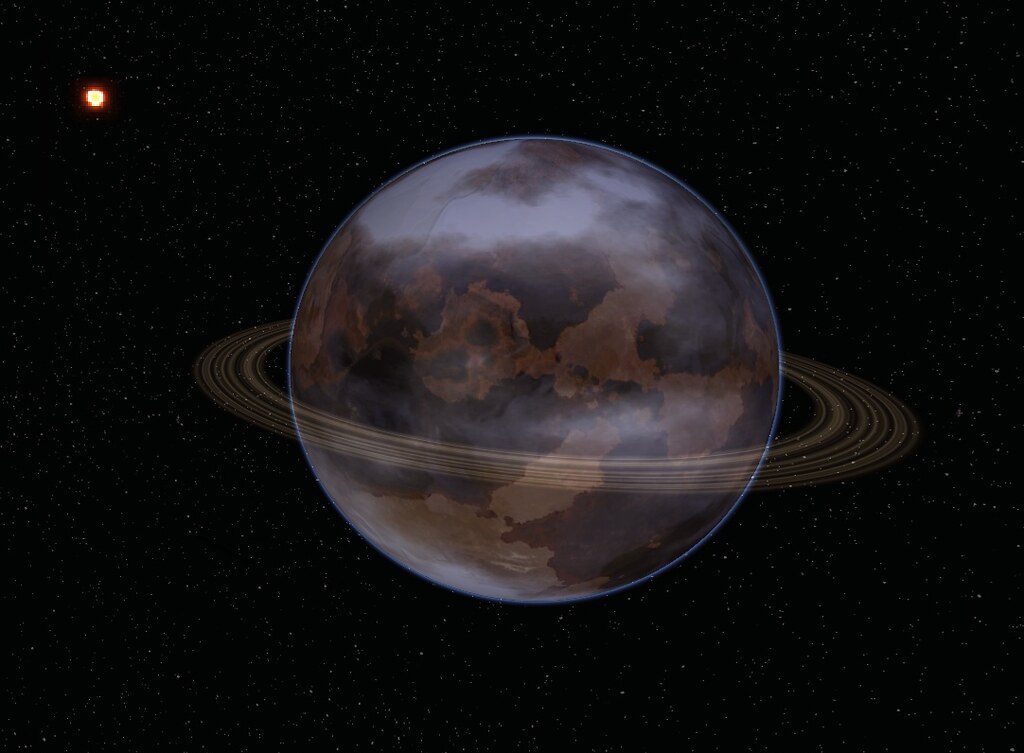PLANET SURVEY: October-1a 9
Class N, Large terrestrial with thick but cold atmosphere"
Class N, Large terrestrial with thick but cold atmosphere"

Mass of the planet: 6,419 • 10/23 kg Distance from the sun: 3,716,657,000 kilometers
Inclination: 25,19° degrees
Density: 5.82 g/cm3
Time of revolution (how long is a year): 226.6 standard Sol years.
Time of rotation (how long is a day): 37.5 earth days
Atmosphere Chemical Composition: 43% Hydrogen, 54% Nitrogen, 2% Carbon dioxide 1% other
Moons or Rings: One prominent ring which was made up of 64% water-ice and then the rest was various carbonate rock fragments, and dust. One small asteroid was detected in an eccentric unstable orbit, with a predicted collision with the planet in a few thousand years.
The planets core is mainly made up of iron and nickel with trace amounts of various heavy elements undergoing nuclear fission, the surface is mainly granite with water ice A significant magnetosphere is present. Surface temperatures were beyond accommodatingly cold and the atmospheric composition does not bode well for terraforming. The inclination and orbital periods means that the poles are each bathed in perpetual sunlight, and then complete darkness for periods of over 60 years during the solstices.
Three satellites were left in orbit. They required significant radiation shielding due to the highly charged particle environment of the planets magnetosphere. The estimated life of the satellites has been reduced to less than 20 years because of this.
We propose the planet be formally named "Nint'a" which translates to "stubborn" in the caitian language and accurately describes the large planets slow motion across the sky, as the last orbiting body in this solar system.